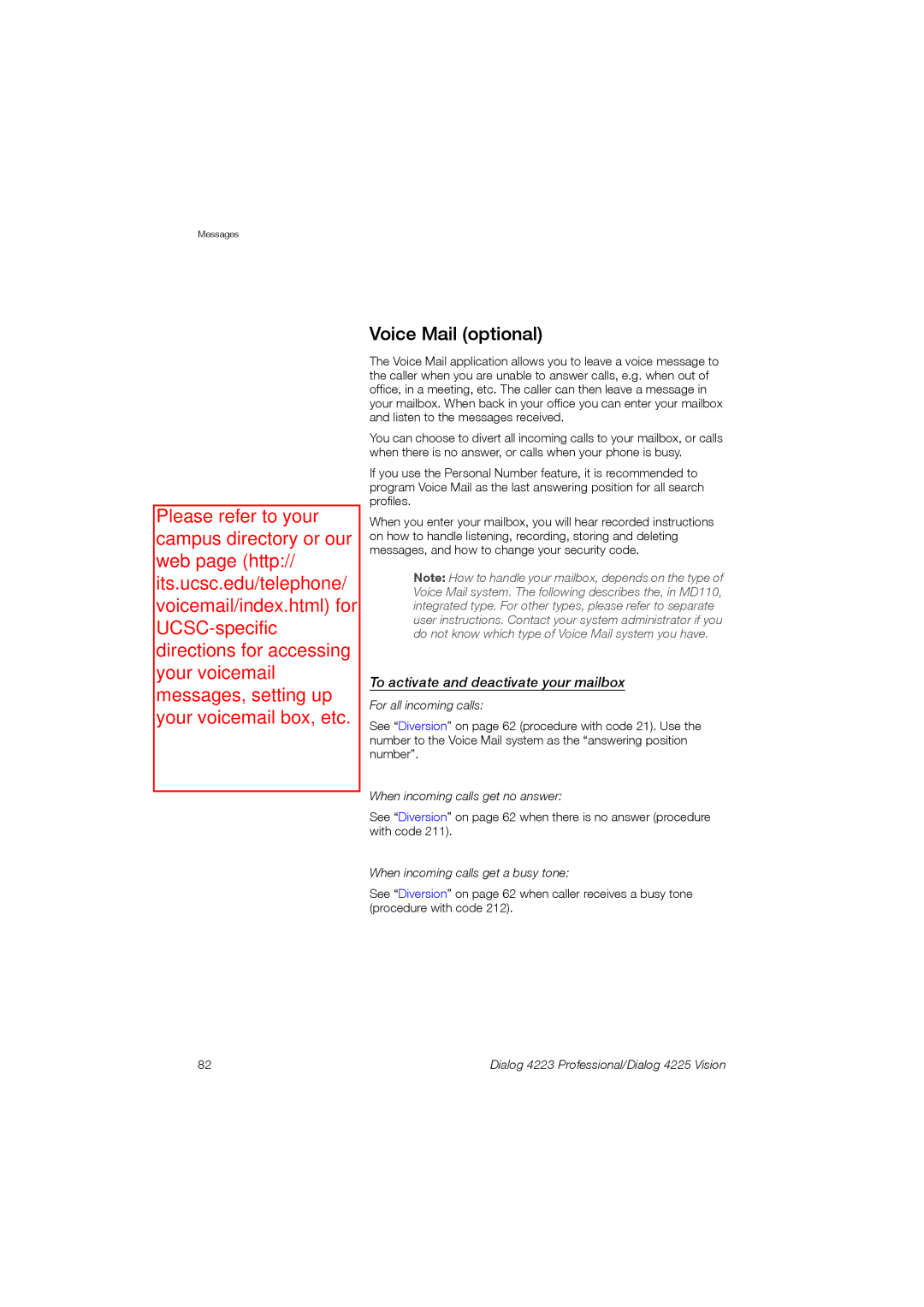
Messages
Voice Mail (optional)
Please refer to your campus directory or our web page (http:// its.ucsc.edu/telephone/ voicemail/index.html) for
The Voice Mail application allows you to leave a voice message to the caller when you are unable to answer calls, e.g. when out of office, in a meeting, etc. The caller can then leave a message in your mailbox. When back in your office you can enter your mailbox and listen to the messages received.
You can choose to divert all incoming calls to your mailbox, or calls when there is no answer, or calls when your phone is busy.
If you use the Personal Number feature, it is recommended to program Voice Mail as the last answering position for all search profiles.
When you enter your mailbox, you will hear recorded instructions on how to handle listening, recording, storing and deleting messages, and how to change your security code.
Note: How to handle your mailbox, depends on the type of Voice Mail system. The following describes the, in MD110, integrated type. For other types, please refer to separate user instructions. Contact your system administrator if you do not know which type of Voice Mail system you have.
To activate and deactivate your mailbox
For all incoming calls:
See “Diversion” on page 62 (procedure with code 21). Use the number to the Voice Mail system as the “answering position number”.
When incoming calls get no answer:
See “Diversion” on page 62 when there is no answer (procedure with code 211).
When incoming calls get a busy tone:
See “Diversion” on page 62 when caller receives a busy tone (procedure with code 212).
82 | Dialog 4223 Professional/Dialog 4225 Vision |
